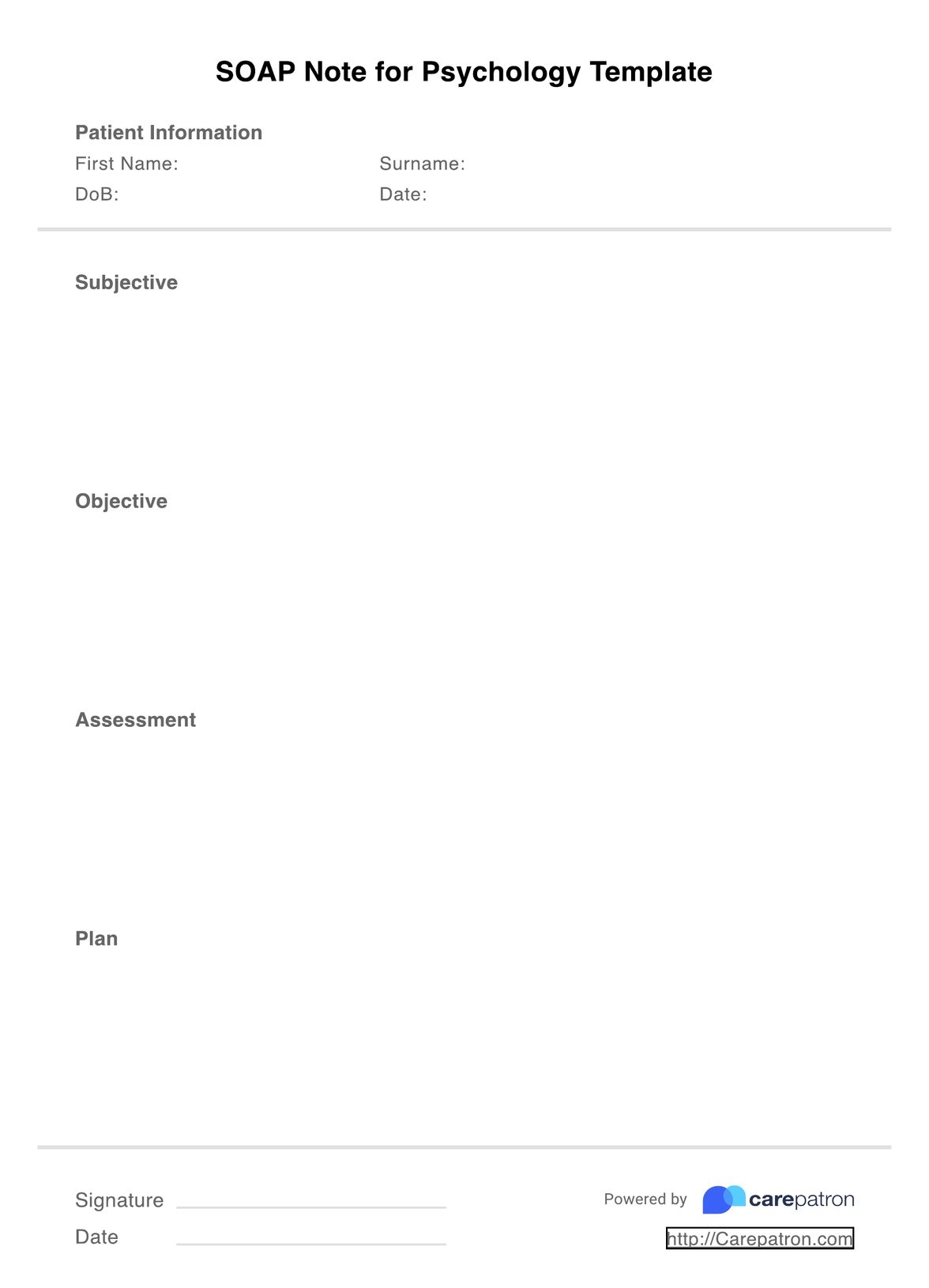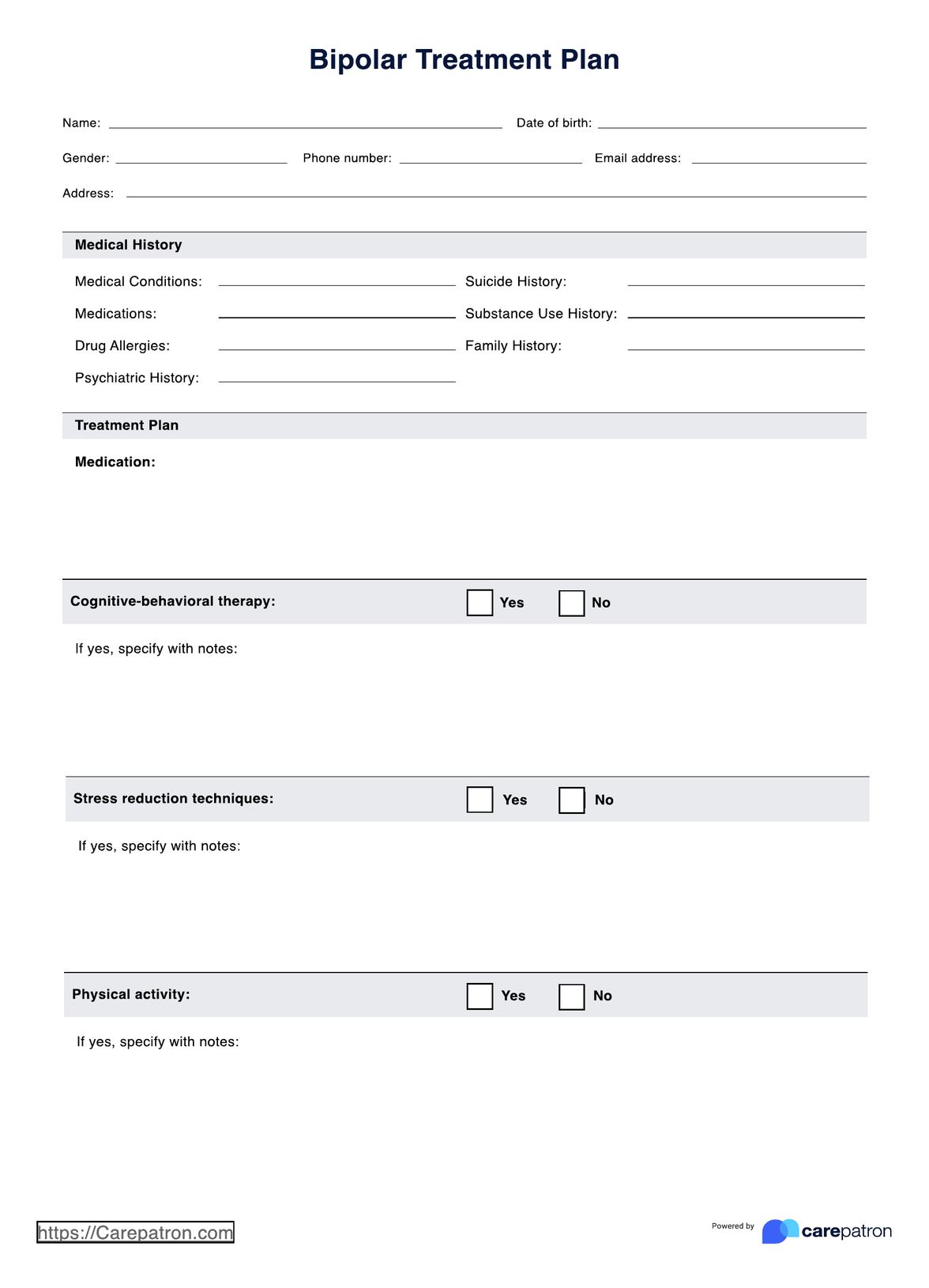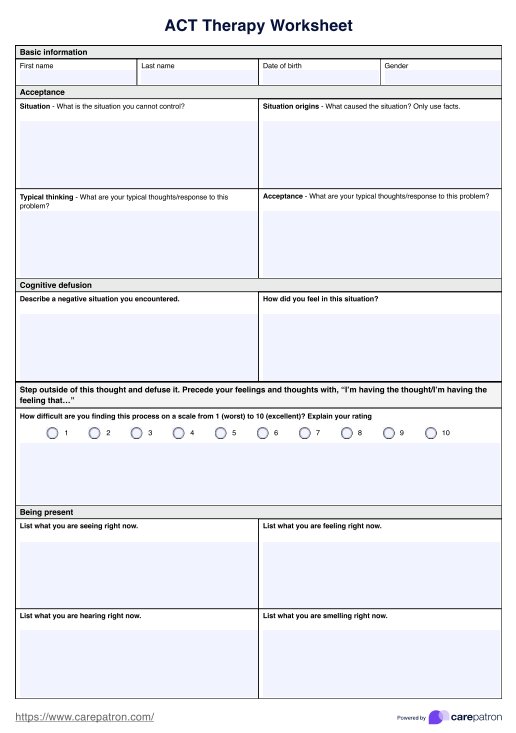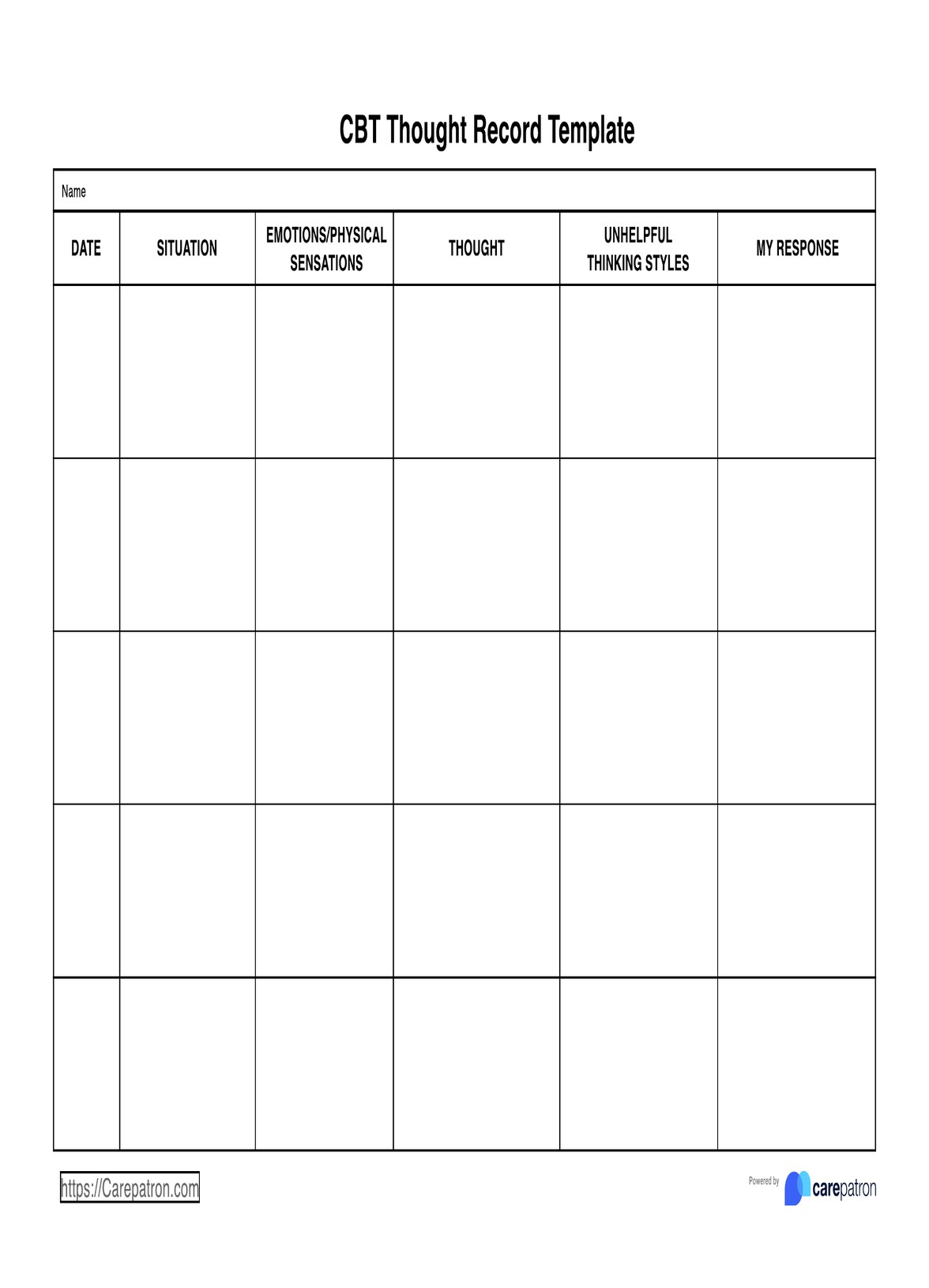Short Blessed Test
If you are dealing with older adults suspected of having cognitive impairment, administer the Short Blessed Test to determine if they need to undergo comprehensive treatment.


What is the Short Blessed Test?
The is a nifty screening tool designed to help healthcare professionals deal with patients suspected of having cognitive impairment. As such, it is commonly used for those with dementia or Alzheimer's. Any neuro-cognitive defecits are assessed through this tool. This test will help them gauge their patients by focusing on different aspects of a person’s cognition, such as their attention, memory, and orientation.
This test is an easy-to-use screening tool and can be quickly accomplished because it comes as a six-item questionnaire. The one we are discussing is the version created by the Washington University School of Medicine. This version simply asks patients the following questions:
- What year is it now?
- What month is it now?
- Without looking at your watch or clock, tell me what time it is.
- Count aloud backward from 20 to 1.
- Say the months of the year in reverse order.
- Repeat the name and address I asked you to remember.
Now, note that while this is a useful tool for assessing patients with potential cognitive impairment or disorders, it is merely used as a screening tool, not a diagnostic tool. It would be prudent to use it alongside other assessments that gauge cognitive impairment and disorders to get a better picture of the patient. Having a better picture of the patient means you can determine what would go in a comprehensive examination, if a diagnosis is necessary, and what should go into the treatment plan.
Watch this video to see an example of how the Short Blessed Test is performed:
Short Blessed Test Template
Short Blessed Test Example
How to Use the Short Blessed Test
All the patient needs to do is to answer the test, so these instructions will be more for the healthcare professional administering this test. This isn’t something that can be taken home or self-administered, so the professional has to conduct it like an interview. Here are things that they need to consider as they conduct the test:
- What year is it now?
- The exact year must be given by the patient. Though, do note that they are allowed to give an incomplete answer so long as it’s correct. What we mean by this is that they can refer to a year using the last two digits. An example would be 2022. They can say 22. That counts as an incomplete but correct answer.
- What month is it now?
- Same banana as the first question, but this time, there are no possible incomplete answers. They have to name the month, or they can mention the number of the month. Let’s say that this month is April. They can either say April or 4.
Intermission (for the lack of a better word): Before proceeding to the third item, you will give the patient a short exercise for a later item. Tell your patient, “I will give you a name and address to remember for a few minutes. Listen to me say the entire name and address and then repeat it after me.”
The name and address are: John Brown, 42 Market Street, Chicago.
You should read the name and address carefully, emphasizing each part of the phrase. When you read the name and address aloud to your patient, there must be a one-second delay per item.
John Brown. 42 Market Street. Chicago.
You will give the patient a trial phase in which they have to be able to say the name and address in sequence three times straight without assistance. If the patient cannot repeat this phrase after three attempts, you must mark them with a “C”, which stands for them being unable to learn the phrase after three tries.
Whether the patient is able to learn the phrase or not, you must say, “Good, now remember that name and address for a few minutes.”
- Without looking at your watch or clock, tell me what time it is.
- It’s as simple as the first two questions. However, the answer will be counted as correct if they can give the exact time or if they give a time that is within an hour of the exact time, plus or minus. So, let’s say for the sake of example that the time is 11am. They can mention anything between 10am-11am or 11am-12pm.
- If they give a vague answer, like “almost 11,” you need to prompt them to be more specific.
- Count aloud backward from 20 to 1.
- It’s as straightforward as it sounds. The patient just needs to count down from 20 to 1. If they skip a number, that counts as an error. They are only allowed two errors for this item.
- Say the months of the year in reverse order.
- Same thing as Item 4, except they need to recite all the months of the year in reverse order. They are also only allowed up to two errors.
- If the patient is unable to initiate the answer, you may prompt this part of the test with “December” to get them going. This still counts as an error, though.
- If the patient starts by saying the months forward instead of backward upon starting this part of the test, the instructions should be repeated. This won’t count as an error. You are giving them another chance, essentially.
- If, during the task, they start saying the sequence forward instead of backward, or if they simply forgot the task midway through, tell them the instructions again and ask them to do it in reverse order again. This counts as an error.
- Repeat the name and address I asked you to remember.
- This is the part where they have to recite to you the name and address you gave them during the intermission. They simply need to recite all parts of the phrase you gave: John Brown, 42 Market Street, Chicago.
- You will score them for each of the following: John, Brown, 42, Market Street, and Chicago.
- They need to recite the number correctly.
- As for Market Street, saying Market is enough. If they say Market Lane, Market Boulevard, Market Avenue, or something similar, it will still count as a correct answer so long as Market is mentioned.
- The maximum number of errors that can be committed here is 5 given that there are 5 items to score.
How to Score the Short Blessed Test
Once you have administered the test to the patient and they have finished answering, it’s time for you to calculate the scores. Unlike most tests, correct answers for the Short Blessed Test count as 0 points. You will count the number of incorrect answers for this test, specifically the number of errors they committed per item.
Just to reiterate, here are the number of errors they can commit per item:
- Item 1: 1 error
- Item 2: 1 error
- Item 3: 1 error
- Item 4: 2 errors
- Item 5: 2 errors
- Item 6: 5 errors
You may refer to the table below to help you calculate your scores:

Here are the cut-off scores to help you interpret the results. This is based on clinical research findings from the Memory and Aging Project:
- 0 to 4 means they have Normal Cognition
- 5 to 9 means they have Questionable Impairment (evaluate for early dementing disorder)
- 10+ means they have Impairment Consistent with Dementia (evaluate for dementing disorder)
While there are directives for the latter two ranges, if they score 0 to 4, that doesn’t necessarily mean they are not at risk. It’s best that the patient gets checked every now and then, especially if they believe that they might experience cognitive impairment or decline.
When is it best to administer the Short Blessed Test?
Given the Short Blessed Test’s nature is a screening tool for cognitive impairment and decline, the best time to use this is during the initial stages of your treatment program for your patient, which is the part of the program where you are still trying to get to know the patient and gauging them for potential cognitive maladies. For instance, if you have a patient who has early dementia or Alzheimer's (or is suspected of any neuro-cognitive declining), it is important to test them with this assessment.
Using this assessment during the initial stages creates the opportunity for early interventions if the results of the Short Blessed Test point to Questionable Impairment or Impairment Consistent with Dementia. Though, do note that the results of the Short Blessed Test should not be the sole reasons for working on interventions. Again, it’s recommended that healthcare professionals also use other assessments to cover more ground and better inform their plans.
The Short Blessed Test isn’t just a one-time, big-time test for patients to take. Let’s say that you, the healthcare professional, already created intervention and treatment plans for the patient, and the patient is following said plans. You can reissue this test to them every now and then as a way to monitor their progress. Are they getting better? Or are they getting worse? The answers to these questions will also help you answer if your intervention and treatment plans should be maintained, tweaked, or overhauled.
Who can use the Short Blessed Test for their work?
Given that the Short Blessed Test is a screening tool for cognitive impairment and decline, the following healthcare professionals can use this tool for their work:
- (Clinical) Psychologists
- Psychiatrists
- Neurologists
- Neuropsychologists
- (Mental Health) Therapists
So long as the healthcare professional is highly trained and well-equipped to deal with patients with potential cognitive impairment or patients experiencing cognitive decline, they can definitely add the Short Blessed Test as part of their roster of assessments.
Just to reiterate and emphasize an early point: this test is a screening tool and should not be used, under any circumstance, as a diagnostic tool. We highly recommend that you make use of other cognitive impairment-related assessments alongside the Short Blessed Tool in order to tackle the (potential) cognitive problem from a wide variety of angles. This is so you can cover more ground and make well-informed decisions for your patient, especially when it comes to developing plans for intervention and treatment down the line.
While this test is for the patient to answer, they cannot exactly engage with the test paper itself. This is not a self-administered test and should only be used by the healthcare professional, who will be administering this like an interview.

What are the Benefits of using the Short Blessed Test?
It’s an inexpensive tool to use.
The Short Blessed Test does not require anything special in order to be conducted. You simply need a printed copy and pen (or the PDF file), and you are good to administer this to your patient. At most, you just need a clock so you know the correct answer to one of the items, but other than that, you don’t really need anything else.
Not only is it inexpensive, but it’s also easy to use. The instructions are clear for both the patient and the healthcare professional. There is even a scorebox for the professional to calculate the scores easily.
Last, to jump off the point of being easy to use, the test only has six items, so it should only take anywhere between five to ten minutes for your patient to answer everything.
It can help identify patients who might benefit from comprehensive examinations.
As we mentioned earlier, using this tool is a good way to gauge if a patient is at risk of developing cognitive impairment and disorders. While it does not exactly diagnose the patient, it has directives for certain score ranges, both of which are to endorse the patient for further examination. This could lead to official diagnoses and early interventions and treatment that will, hopefully, curb the progress of cognitive impairment and decline in patients.
It can help monitor patients and evaluate the efficacy of treatment plans.
This screening tool can also be used as a patient monitoring tool, especially if intervention and treatment plans were created for them and they are already following them. It can be used to monitor whether they are improving or their cognitive impairment or disorder is progressing.
It can also be used to help determine if intervention and treatment plans are effective or not. While it does not assign a qualitative score for these plans, it can help nudge healthcare professionals to think about if their plan is working or not. Obviously, if their patients aren’t getting any better, then their plans are not working, or at least, aspects of those plans aren’t.
Commonly asked questions
No. While this can detect possible signs of dementia, it is not a diagnostic tool, so you should never use this to diagnose patients with dementia or any cognitive disorder. It can be part of the diagnostic process, though, alongside other assessments to make up a comprehensive patient examination.
No. If they already have a severe cognitive impairment, you shouldn’t use this test on them anymore because you’ll likely get the same results, and they might not even be able to answer the items in the first place. You should only use this on patients who can still communicate and hear clearly.
Yes, however, that does not mean they are not at risk of developing cognitive impairment down the line. It’s recommended that they do routine check-ups, especially if they are at the age when developing cognitive impairment and disorders is common and expected.


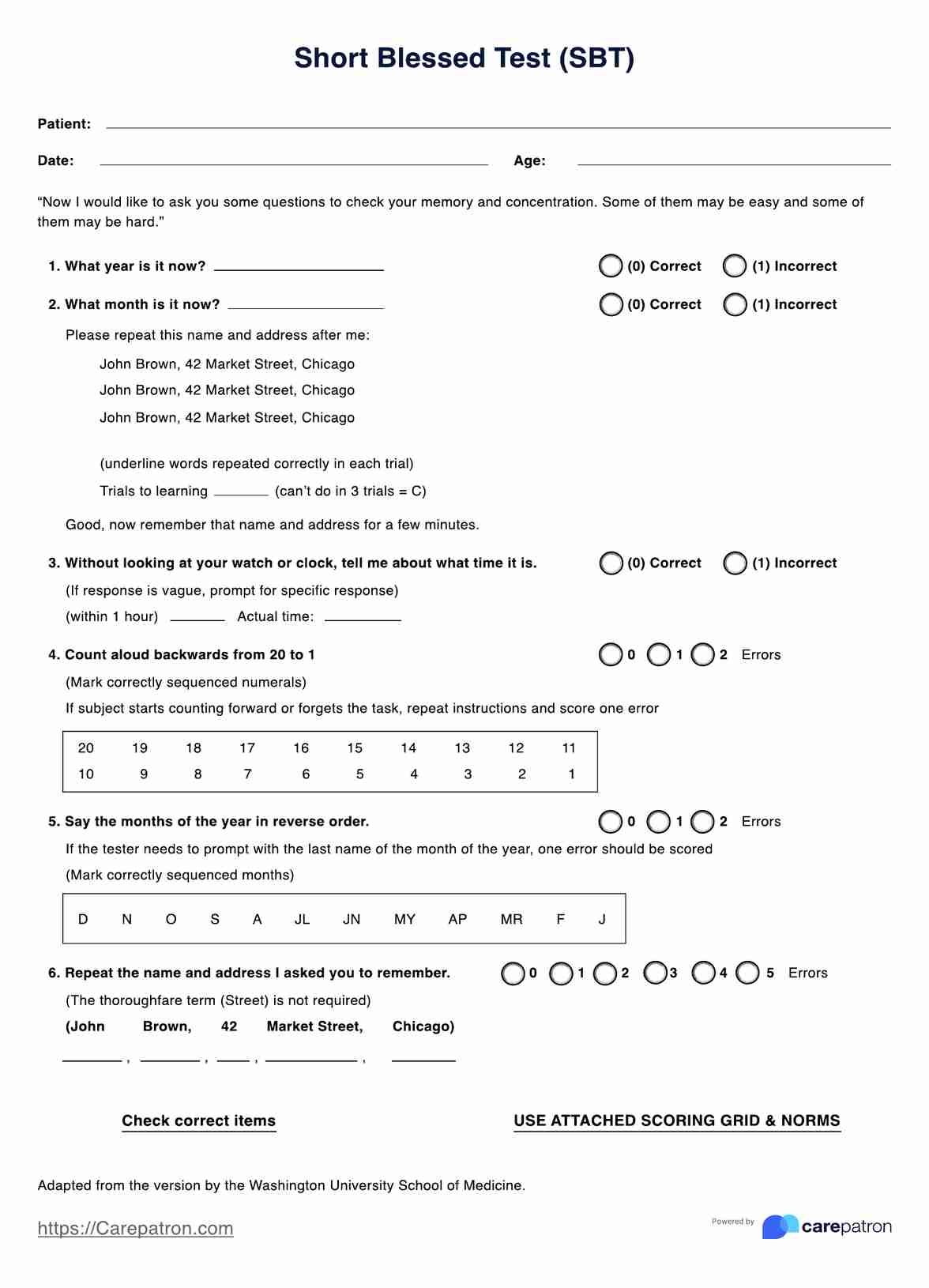
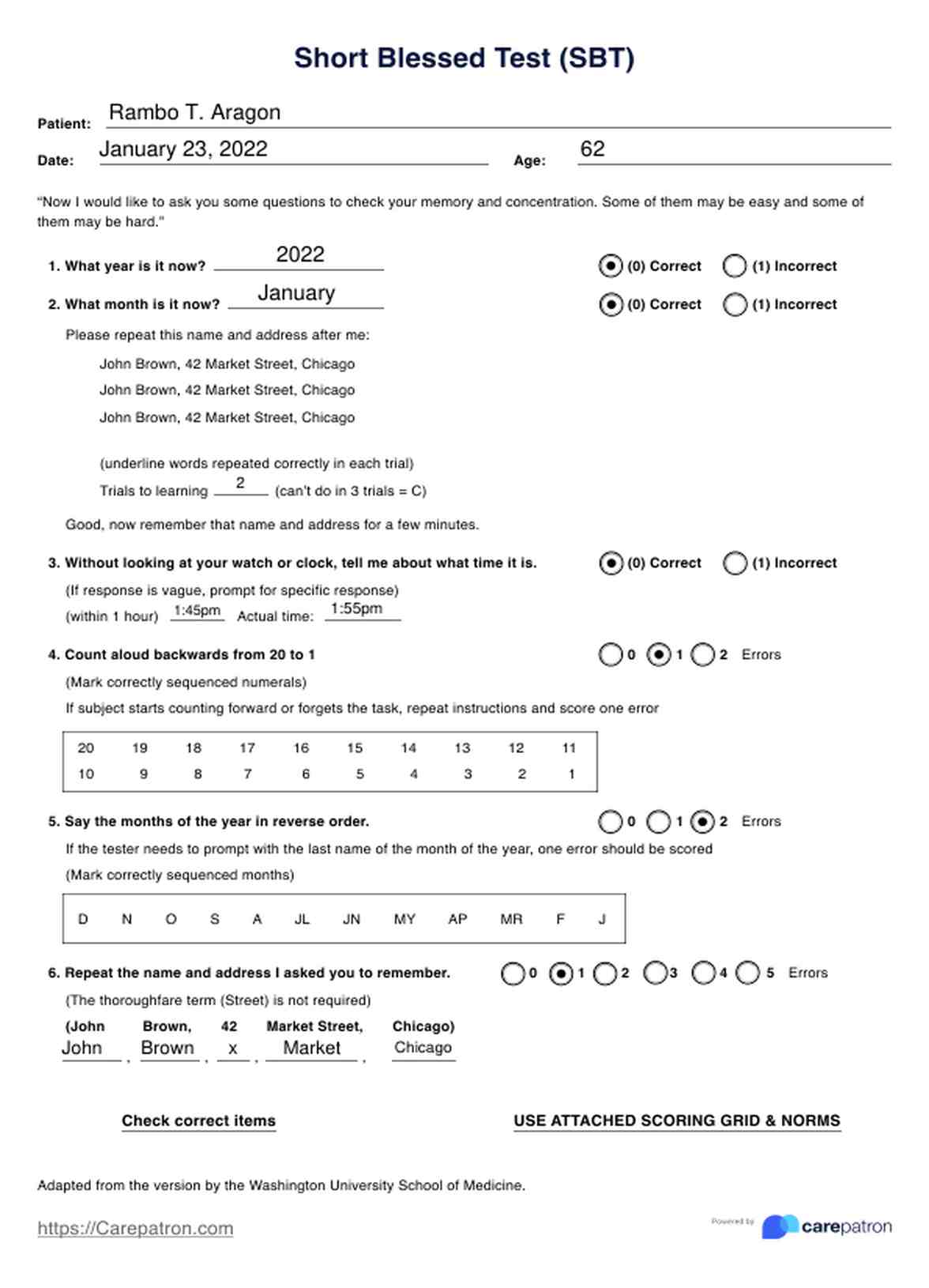














-template.jpg)




























































































